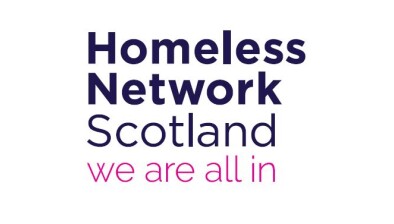Blog: What do the latest homelessness stats tell us?
 With progress on homelessness slowing according to the latest figures, Aoife Deery looks behind the stats to find out why, and see what can be done.
With progress on homelessness slowing according to the latest figures, Aoife Deery looks behind the stats to find out why, and see what can be done.
Last month, the Scottish Government released its bi-annual statistics on homelessness and Housing Options in Scotland. The release covered the period between April and September 2017 and also provided snapshot figures of temporary accommodation usage as at 30 September 2017. The trends in this statistics release are broadly consistent with the trends in the annual release, which we explore in more depth in our Getting Behind the Statistics report, published last Monday.
The latest figures show that on average between April to September 2017 a household in Scotland became homeless every 18 minutes. In addition, the latest numbers highlighted the deeply worrying rise in the number of children in temporary accommodation compared to the same day the year before. As of 30 September 2017, this now stands at 6,581, an increase of 594 children, and is the highest level since 2008. Additionally, the number of families in temporary accommodation was 3,426, an increase of 3% compared to the same time last year. The fact that a greater number of children are spending time in the limbo of temporary housing raises some serious questions about how effectively homelessness is being tackled in Scotland. It also means that it is now more important than ever that temporary accommodation should be of good quality and for families should spend as little time as possible before moving on to permanent accommodation.
Further, the statistics suggest that finding suitable accommodation is becoming an increasing challenge for some local authorities, notably Edinburgh, which reported having 25 families in bed and breakfast accommodation (eight times the number of any other local authority) on the 30 September last year. However, we are aware that the City of Edinburgh Council has taken steps to address this by establishing a Homelessness Taskforce which is due to make recommendations for action in June. Increasing reliance on B&B accommodation for families is particularly concerning as it is often of poor quality and doesn’t contain the facilities that families need, especially when housed there for extended periods of time. The Scottish Government and the housing sector as a whole must urgently act to turn around this sustained rise in temporary and often unsuitable accommodation.
Of course, the rising use of temporary accommodation is directly linked with the lack of suitable housing to move into. The government must ensure that its ambitious housebuilding target of 50,000 affordable homes translates to the right type of homes in the right places to best meet local need. Shelter Scotland will soon be launching research into the planned delivery of new affordable homes to meet the target which will explore this issue in more detail.
The Prevent1 figures are intended to give some insight into how the Housing Options approach is working alongside homelessness duties. Between April and September 2017, there were 23,335 approaches for Housing Options; 62% for homeless-type reasons and 38% of prevention-type reasons. This is a decrease of 3,555 approaches and so suggests a change in how local authorities are operating Housing Options. However, local authorities decide for themselves what qualifies as a Housing Options approach and this results in a lot of variation between councils’ Housing Options statistics. The Scottish Government acknowledges the difficulty of assessing and defining what success looks like with this level of variation. This is why we are keen for the long-awaited Housing Options training toolkit to be launched and for some consistency and comparability to be applied to Housing Options, and we reflect upon this more deeply in our Getting Behind the Statistics report. Ideally, we want people to receive the service best suited to their needs and as many people as possible either staying in their current accommodation if appropriate or moving on to stable, sustainable and affordable housing.
So, what will we be looking for in future? As above, we’ll be looking to see how the Housing Options training toolkit gives more consistency and clarity to the statistics. Otherwise, we’ll be looking with interest to see if the new Private Residential Tenancy (PRT), which was launched in December 2017, has had any impact on the number of people becoming homeless from the private rented sector. The PRT significantly changed and strengthened the rights of private renters in Scotland and we would hope to see a decrease in homelessness from this sector going forward, bearing in mind that it was the source of nearly 20% of homeless applications last year.
Finally, for the sake of all the families and people going through the homelessness system, we hope the next publication will show positive steps towards alleviating homelessness. Homelessness continues to stain Scotland’s pride in being a progressive nation and these statistics remind us of the significant and complex work we have left to do.
The post What do the latest homelessness stats tell us? appeared first on Shelter Scotland Blog.









